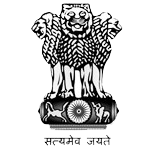
Majority of the respondents have rated the improvement in ease of doing business at 4.6/10 in a survey conducted by PHD Chamber on the completion of two years of new Government.
Though the respondents unanimously felt that there has been some improvement in the sentiments for doing business, still there is a long way to go for a visible change to be seen and felt at the ground level, said PHD Chamber of Commerce & Industry in a press statement issued .
More than 2000 responses were received from various businesses including micro, small, medium and large enterprises.
While some parameters have been observed to have attained a good score from the respondents, including an improvement in the availability of adequate infrastructure (5.6/10) and improvement in investor friendly environment (5.4/10), yet survey points towards the urgent need for speedy reforms.
There is significant improvement in the bureaucracy and a score of 5.2/10 has been obtained in this parameter. They are aware of changes in the policy environment and are serious to implement the policies.
Ease of Doing Business so Far
| Parameters | Score |
| Improvement in availability of Physical Infra | 5.6 |
| Improvement in investor Friendly Environment | 5.4 |
| Improvement in awareness of Bureaucrats | 5.2 |
| Improvement in availability of utilities | 5.2 |
| Improvement in availability of Finance | 5.2 |
| Improvement in simplification of Taxation | 4.8 |
| Improvement in the interface with Bureaucracy | 4.2 |
| Improvement in procedural bottlenecks | 4.0 |
| Improvement in Factors of Production | 3.3 |
| Improvement in reduction in Transaction Costs | 3.1 |
| Average Score | 4.6 |
Source: PHD Research Bureau
However, improvement in interface with the bureaucracy (with a score of 4.2/10) is still not according to the expectations of the respondents.
There has been improvement in the availability of utilities including water, power, fuel and telecom. However, respondents unanimously felt that the government has to go a long way to improve the distribution of utilities and a score of 5.2/10 has been assigned to this indicator.
The availability of credit, once considered a major hurdle in the ease of doing business has seen some improvement and has been given a score of 5.2 by the respondents. However, the businesses, especially MSMEs face problems in procuring credit from banks.
The survey found that companies still face issues while dealing with tax authorities and settling tax disputes. The implementation of the GST is awaited with the utmost anticipation. Majority of the respondents have expressed their annoyance at the lack of timely implementation of the GST and have desired its operation with immediate effect, said PHD Chamber.
The regulatory and procedural bottlenecks still remain a major concern and have not been able to reduce the time taken in the entire lifecycle of the business; the respondents have assigned a score of 4 to the indicator. It has been suggested that regulatory setup should facilitates the smooth and efficient functioning of businesses and markets.
The survey points out that there has been no significant improvement in 4 factors of production such as availability of land and the labour laws have not yet been simplified. There is still no clarity on the Land Acquisition Policy. Transaction costs still remains a major challenge for most businesses.
The survey has suggested the implementation of GST with immediate effect and ground level improvement in factors of production. Rationalizing the interest rate scenario is the need of the hour as our costs of borrowings are still significantly higher as compared with advanced, emerging and developing economies, said the industry body.
Few respondents said that, Inspector Raj still persists in the economy which needs to be addressed at the earliest.
PHD Chamber suggest the speedy implementation of reforms and work towards speedy passage of pending reform bills that maximizes benefits for workers, businesses and economy.
On the macro economy, barring exports growth, of the seven basic indicators, the industry body said that there is significant improvement in six indicators including growth of GDP, Inflation, Industry growth, FDI inflows, foreign exchange reserves and stock market indices.
Going ahead, the IMF has projected India to grow at 7.5% in 2016. According to the Economic Survey 2015-16, India’s long run potential GDP growth is projected to be about 8%-10%.
The Economy So Far
| Sr. No. | Indicators | 2013-14 | 2015-16 |
| 1 | Gross Domestic Product (GDP)/Gross Value Added (GVA) | 6.3 | 7.3$ |
| 2 | Inflation | ||
| CPI | 9.5^ | 4.9^ | |
| WPI | 5.9^ | -2.5^ | |
| 3 | Industry Growth | 5.0& | 8.8$ |
| 4 | Exports Growth (%) | 4.6 | -15.8 |
| 5 | FDI Inflows (US$ mn) | 24,299 | 29, 443* |
| 6 | Foreign Exchange (US$ mn) | 3,04,223 | 3,60,176 |
| 7 | BSE SENSEX | 23905# | 25,653# |
Source: PHD Research Bureau, compiled from various sources
Note: *Data pertains 2015-16 (form April, 2015 to December, 2015)
# Data pertains to 15th May2014 and 16th May 2016, closing value
^ Data pertains to the annual average of CPI and WPI (April-March, 2013-14 and 2015- 2016)
$ Data pertains to Quarterly Estimates of Gross Domestic Product (Q3), CSO
& Data pertains to 2nd Revised Estimates, CSO



Leave a Reply
You must be logged in to post a comment.